Have you ever heard that anything that grows in the ground can be grown in a container? That's true, even for roses. While potted roses have additional watering and fertilizing requirements, they are wonderful for patios, decks and balconies, making them adaptable focal points in any size garden. See our step-by-step guide below to make growing a rose container garden easier.
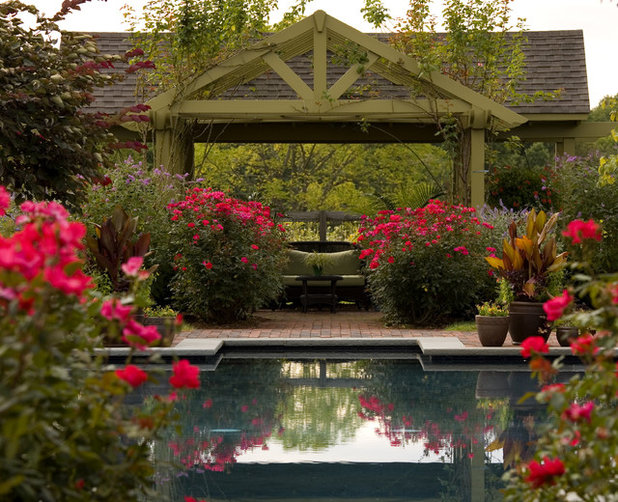
Liquidscapes
1. Choose your container. You can use plastic or clay, depending upon where you live. Gardeners in colder climates may opt for plastic, which resists cracking in colder temperatures, while gardeners in warmer climates will find that clay pots do a better job at keeping rose roots cool during hot summers.
Use containers that are large enough for the type of rose you'll be growing — 10-inch-deep containers for miniature roses up to 1 1/2 feet tall; at least 1-foot-deep containers for patio roses up to 2 feet tall; 15-inch-deep pots for small shrub roses up to 2 to 3 feet tall; and 18- to 22-inch-deep pots for larger shrub roses that grow up to 4 feet tall.
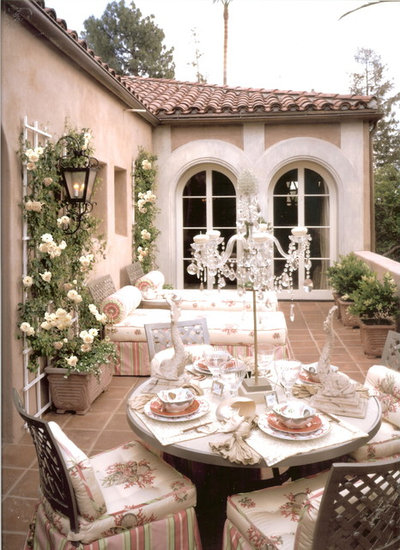
Joani Stewart-Georgi - Montana Ave. Interiors
2. Mix your soil. Roses are heavy feeders, needing a lot of nutrients to keep growing and blooming. Container-grown roses will need a consistent diet of quality soil and nutrients, so get them off to a good start when planting.
Mix together in equal amounts:
• Potting soil
• Garden compost
• Well-rotted steer manure or well-rotted mushroom compost
You can also add a cup of perlite for added drainage and an additional cup of bonemeal for fertilizing.
This is not a hard and fast recipe — really anything along the lines of compost, worm castings and drainage material added to potting soil will do.
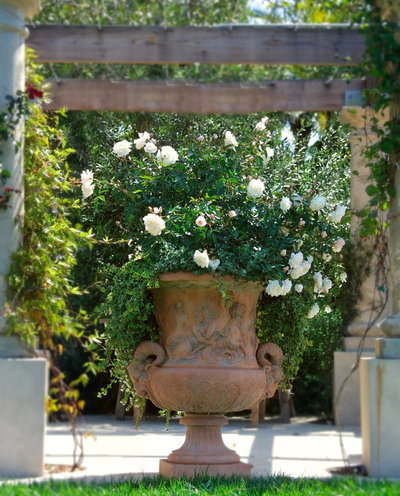
Margie Grace - Grace Design Associates
3. Plant your roses.
• Fill the container two-thirds full of your planting mix.
• Place the rose on the soil surface with its roots gently spread out.
• Fill in with more planting mix and add any additional plants you desire at this time — cascading plants like sweet potato vine
(Ipomoea batatas) are perfect.
• Fill the container to the top edge with soil, as it will settle down when watered.
• Water in thoroughly.
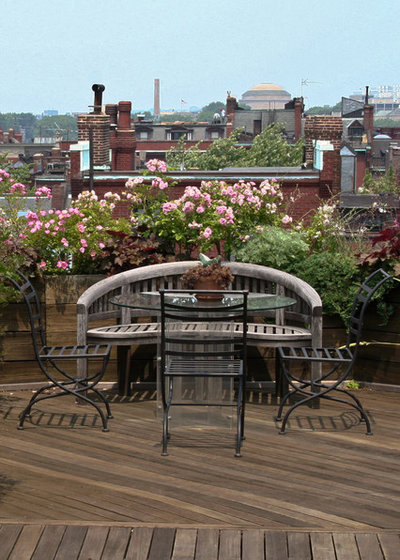
Matthew Cunningham Landscape Design LLC
4. Care for your roses. You'll need to fertilize and water container roses more often than those planted in the ground. If you poke your finger into the soil surface and it's dry about 1 inch down, it's time to water. Fertilize every two weeks with your preferred water-soluble fertilizer, following the package directions.
Be prepared to move your potted roses indoors during very cold winters in northern climates. In the spring apply a tablespoon of epsom salts at the base of each plant for healthy foliage. A springtime application of fish emulsion is great for blooms.
Keep the containers spaced at least 2 feet apart for good air circulation around your roses, which reduces the risk of fungal diseases. Potted roses need the same amount of full sunlight (at least six to seven hours a day) and the same pruning regime and schedule as inground roses.
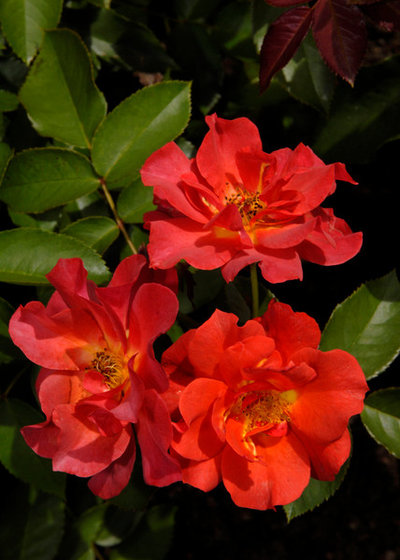
The New York Botanical Garden
Suggested roses for containers. Nearly any rose will grow well in a container, with the exception of very large shrubs and climbers. Look for roses labeled "miniature," "patio rose/larger miniatures," "small shrub" or "medium shrub rose."
Miniature roses: 'Little Linda', 'Peter Pan' and 'Fireworks'
Patio roses or larger miniatures: 'Coffee Bean', 'Avon' and 'Irresistible'
Small shrub roses: 'Lady Elsie May,' 'Laura' and 'Happy Child'
Medium shrub roses: 'Cinco de Mayo,' 'Knockout' and 'Betty Boop'
Shown: 'Cinco de Mayo'
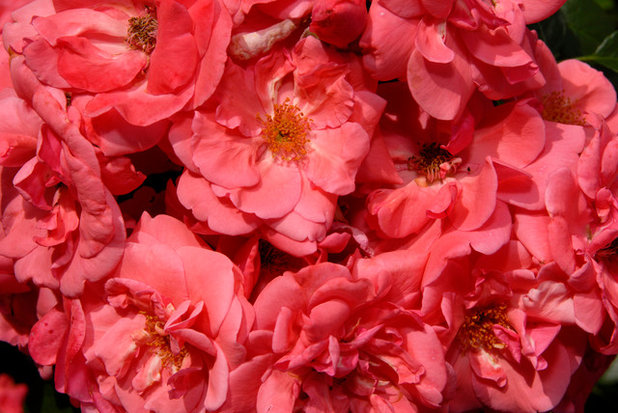
The New York Botanical Garden
Shown: 'Lady Elsie May'
Guide: How to prune roses | More guides to growing roses





